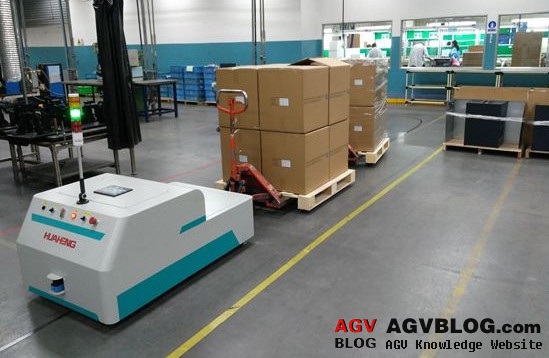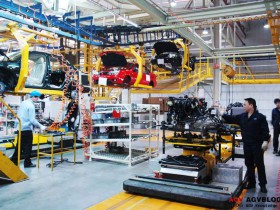AGV requirements for driving ground:
1. The ground bearing capacity is 1.5T / m2 (generally), the special load has different requirements on the opposite bearing, and the ground pressure is 1.5MPa.

AGV driving ground
2. The flatness of the ground is less than 5mm (use 2 meters to measure).
3. The ground needs to be able to discharge the static electricity of the automatic guided vehicle, and the insulation resistance is less than 108 (if the requirements cannot be met, an anti-static plate needs to be installed). The ground must be kept clean and dry during daily driving of the AGV. Any floor joints, garbage, liquids, floor cleaners, compounds can damage the AGV's ability to walk. Electrostatic operation and excessive friction of the wheels may cause parts to be scrapped.
4. Expansion joints, settlement joints, anti-seismic joints and split joints have certain design requirements for these joints:
a) Every effort should be made to avoid seams in the AGV driving path. It is necessary to comprehensively consider the location, size and AGV path planning of specific surface seams.
b) Without special treatment, AGV can pass the seam below 5mm.
c) For the joints with a width of 5-50mm, the upper part of the seam can be embedded with asphalt paste 50mm, the lower part 100mm with foam strips, or with M10 cement mortar, and the surface is lined with silicone paper as an isolation layer.
d) For seams with a width of 50-450mm, a metal cover can be used for processing.
e) For settlement joints of a certain width, special methods or tools can be used for treatment, such as CoGri Joint Stabilisers (CJS). Ground load-bearing is different from forklifts. AGV uses a fixed driving path, and AGV replaces pneumatic tires with polyurethane tires. Therefore, the AGV driving road must meet certain load-bearing requirements: the load per unit area of the ground must be higher than the load per unit area within the horizontal projection area of the AGV.
5. Other construction requirements: ground finishing In order to allow AGV to run smoothly and smoothly, the surface of the ground can be finished. This refers to laying a layer of cement, epoxy resin, ceramic tiles, wooden floors or other chemicals on the AGV road surface Fiber, etc., to improve the flatness of the ground and reduce the influence of the seam on the AGV.




